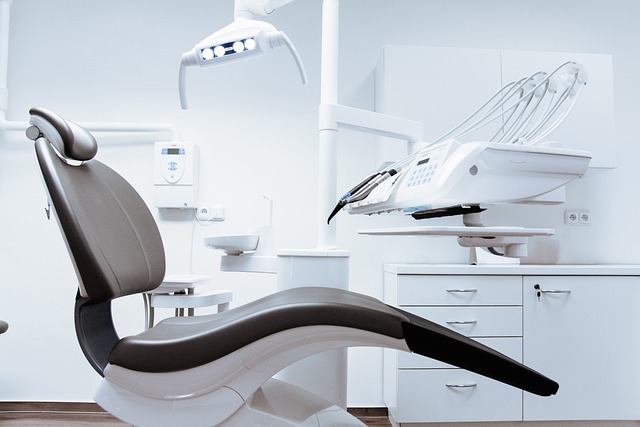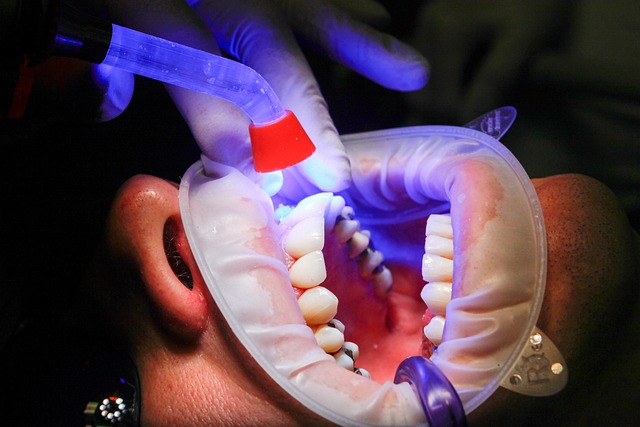24-Hour Dental Care in Eugene, Oregon: Addressing Tooth Loss Emergencies
In Eugene, Oregon, immediate dental care is vital for unexpected tooth loss due to trauma or injurie…….
We are At Your Service
Eugene, Oregon, is a vibrant city offering a unique blend of outdoor exploration and interactive sci.......
Welcome to an in-depth exploration of the vital field of Emergency Dentistry Eugene Oregon, a specialized branch of dental care that addresses urgent oral health issues. This article aims to guide readers through the intricacies of this critical service, highlighting its purpose, practices, and impact on both local communities and the global dental landscape. By delving into various aspects, from historical roots to technological innovations, we seek to demystify emergency dentistry and emphasize its role in ensuring optimal oral health for all.
Definition: Emergency Dentistry Eugene Oregon refers to the provision of urgent dental care services within the city limits of Eugene, Oregon, USA. It involves treating dental emergencies such as severe toothaches, oral injuries, abscesses, or fragmented teeth that require immediate attention to prevent further complications.
Core Components:
Urgent Care: The primary focus is on providing prompt treatment for acute oral health issues, ensuring patient comfort, and alleviating pain.
Comprehensive Services: Emergency dentists in Eugene are equipped to handle a wide range of procedures, from simple extractions and fillings to complex trauma cases, using advanced dental technology.
Accessibility: This service aims to be readily available 24/7 through dedicated emergency clinics, hospitals, or partnerships with regular dental practices, ensuring that residents have access to care when needed most.
Historical Context: The concept of emergency dentistry has evolved over time, driven by the increasing demand for immediate oral care and advancements in dental technology. In Eugene, Oregon, as in many cities worldwide, the need for such services became apparent due to rising dental health issues and a growing awareness of the importance of timely intervention.
International Influence: Emergency Dentistry Eugene Oregon mirrors global trends in urgent oral care, reflecting a growing recognition of its significance across diverse healthcare systems. Internationally, there is a notable rise in demand for emergency dental services, influenced by factors such as:
Urbanization: Rapid urbanization leads to increased tooth decay and oral injuries due to changing dietary habits and lifestyles.
Accidents and Trauma: Growing participation in sports and outdoor activities raises the risk of dental trauma, necessitating immediate care.
Aging Population: Elderly individuals are more prone to dental emergencies related to tooth decay and periodontal disease, placing a higher demand on emergency services.
Regional Variations: The implementation and availability of emergency dentistry vary across regions, influenced by factors like:
| Region | Key Factors Influencing Emergency Dentistry Availability |
|---|---|
| North America | High urban population density, advanced healthcare infrastructure, and robust insurance coverage for dental emergencies. |
| Europe | Diverse healthcare systems; some countries offer universal dental care with emergency services integrated, while others rely on private providers. |
| Asia | Rapid urbanization in developing nations driving demand; access to quality emergency dentistry varies widely across countries. |
| Middle East | Growing awareness of oral health; many countries have dedicated emergency dental clinics, especially in major metropolitan areas. |
Market Dynamics: The economic landscape of Emergency Dentistry Eugene Oregon is shaped by several key factors:
Insurance Coverage: Most private insurance plans in the US cover a portion of emergency dental services, encouraging access and driving market demand.
Public Health Initiatives: Local governments and healthcare organizations may fund public health campaigns promoting oral hygiene, reducing the economic burden of dental emergencies.
Competitive Market: Eugene’s relatively small but thriving community contributes to a competitive dental market, where providers must differentiate themselves through quality care and innovative services.
Investment Patterns: Private equity and venture capital investments in emergency dentistry startups are on the rise globally, fueled by the sector’s potential for growth and its ability to address unmet healthcare needs. In Oregon, local investors and businesses have shown interest in expanding urgent dental care services, recognizing their value in community health and economic development.
Digital Revolution: Technology has revolutionized emergency dentistry through:
Tele dentistry: Remote consultations enable dentists to provide preliminary assessments and guidance, especially in rural or underserved areas.
3D Imaging: Advanced imaging technologies like CT scans offer detailed visualizations of dental structures, aiding in diagnosis and treatment planning.
Digital Record-Keeping: Electronic health records streamline patient data management, ensuring continuity of care and efficient communication between emergency and regular dentists.
Future Potential: Emerging technologies like:
Robotic Dentistry: Robotic-assisted procedures promise enhanced precision and reduced procedure times, potentially transforming emergency dental surgeries.
Biomaterials: Advanced biomaterials for fillings and implants offer improved durability and biocompatibility, leading to longer-lasting restorations.
Genetic Testing: Genetic tests can predict an individual’s risk of developing certain oral diseases, enabling proactive care and personalized treatment plans.
Legislative Frameworks: The regulatory environment for emergency dentistry varies by jurisdiction:
Licensing and Certification: Dentists practicing emergency dentistry must be licensed and certified, adhering to specific education and training requirements. In Oregon, the Oregon Dental Board oversees licensing and ensures compliance with state regulations.
Insurance Regulations: Insurance companies have specific guidelines regarding what constitutes a dental emergency, influencing patient access and reimbursement rates.
Public Health Policies: Public health initiatives often promote preventive care and oral hygiene education, aiming to reduce the prevalence of dental emergencies.
Influence on Development: These policies play a crucial role in shaping:
Access to Care: Regulations ensure that emergency dental services are accessible, affordable, and available 24/7.
Quality Standards: Licensing and certification maintain high standards of care, protecting patients from substandard treatment.
Research and Innovation: Policies promoting oral health research can drive technological advancements in emergency dentistry.
Main Challenges:
Accessibility: Ensuring 24/7 access to emergency dental services remains a challenge, particularly in rural or underserved areas.
Cost: Urgent dental care can be expensive, often straining insurance coverage limits and causing financial burden on patients.
Stigma: Some individuals may avoid seeking emergency dental treatment due to concerns about stigma or perceived social judgment.
Criticisms:
Over-referral: There is a potential for over-referral of non-emergency cases, leading to longer wait times in emergency clinics.
Inadequate Training: Critics argue that some general dentists may not receive sufficient training in managing dental emergencies, impacting treatment quality.
Proposed Solutions:
Community Outreach Programs: Expanding community dental clinics and mobile units can improve accessibility, especially in underserved regions.
Insurance Policy Reforms: Adjusting insurance coverage policies to better define dental emergencies can reduce costs for patients and providers.
Public Awareness Campaigns: Educating the public about oral health and emergency care can reduce stigma and encourage proactive treatment-seeking behavior.
Case Study 1: Urban Emergency Dental Clinic
In a bustling metropolitan area, an innovative emergency dental clinic was established to cater to the diverse needs of its multicultural population. The clinic offered:
Multilingual Staff: Bilingual dentists and assistants ensured effective communication with patients from various language backgrounds.
Cultural Sensitivity: Customized care approaches considered cultural preferences, promoting trust and comfort among diverse patient groups.
Community Partnerships: Collaboration with local schools, community centers, and faith-based organizations increased awareness and accessibility.
Outcomes: This clinic experienced high patient satisfaction rates, reduced wait times for emergency treatment, and successfully addressed the unique oral health needs of its diverse population.
Case Study 2: Rural Tele-Dentistry Initiative
A small rural community faced challenges accessing emergency dental care due to limited local resources. A tele-dental initiative was launched, providing:
Remote Consultations: Trained dental hygienists conducted initial assessments via video conferencing, triaging patients for in-person or virtual follow-ups.
Mobile Dental Unit: A fully equipped mobile clinic visited the community periodically, offering emergency care and preventive services.
Impact: The program significantly improved access to dental emergencies, reduced travel costs for patients, and fostered a sense of ownership among community members regarding their oral health.
Emerging Trends:
Oral Health Technology Integration: Advanced technologies like AI-driven diagnostic tools and wearables for oral health monitoring will play a larger role in emergency dentistry.
Telemedicine Expansion: Virtual dental care is expected to grow, offering remote consultations and remote monitoring of chronic conditions.
Personalized Medicine: Genetic testing and personalized treatment plans will become more common, improving outcomes and patient satisfaction.
Growth Areas:
Specialty Emergency Dentistry: Niche areas like pediatric emergency dentistry or sports dentistry may gain prominence, catering to specific patient populations.
Oral Health Education: Increased focus on oral health education in schools and communities will contribute to preventive care and reduce the burden of dental emergencies.
Strategic Considerations:
Interdisciplinary Collaboration: Partnering with primary care providers, public health agencies, and community organizations can enhance emergency dentistry’s reach and impact.
Data-Driven Decision Making: Utilizing analytics for patient population health management and resource allocation can optimize service delivery.
Global Knowledge Sharing: International collaborations can foster best practices, technology transfer, and capacity building in emerging markets.
Emergency Dentistry Eugene Oregon is a vital component of the city’s healthcare ecosystem, addressing urgent oral health needs with expertise and compassion. From its historical roots to technological advancements and global trends, this field continues to evolve, reflecting a growing recognition of oral health as an integral part of overall well-being. By navigating challenges, embracing innovation, and fostering community partnerships, emergency dentistry professionals ensure that residents of Eugene and similar cities worldwide have access to life-saving, high-quality dental care when they need it most.
Q: What should I do if I experience a dental emergency in Eugene, Oregon?
A: If you are experiencing a dental emergency in Eugene, call your dentist or the local emergency dental clinic immediately. They can provide guidance and direct you to the nearest available care.
Q: Are emergency dental services covered by insurance?
A: Insurance coverage for emergency dentistry varies. Many plans cover urgent dental care, but it’s essential to check with your specific insurer for details on what constitutes a ‘dental emergency’ and the associated benefits.
Q: How can I find an emergency dentist near me?
A: You can search online directories or contact local dental associations for listings of emergency dentists in your area. Many clinics also have 24/7 hotlines to assist with urgent appointments.
Q: Can emergency dentistry help with non-emergency procedures like teeth whitening?
A: No, emergency dentistry is designed to handle acute oral health issues only. Non-emergency procedures should be scheduled with regular dentists for appropriate care and treatment.
Q: What technologies are used in modern emergency dentistry?
A: Advanced technologies include CT scans for detailed dental imaging, digital record-keeping, tele-dental consultations, and emerging innovations like robotic-assisted surgeries and advanced biomaterials for fillings and implants.

In Eugene, Oregon, immediate dental care is vital for unexpected tooth loss due to trauma or injurie…….

In active Eugene, Oregon, with its diverse population, access to an emergency dentist is vital for i…….

In Eugene, Oregon, access to urgent dental care is crucial for both locals and visitors due to unexp…….

Residents in Eugene, Oregon can access convenient and reliable 24-hour dentist services for urgent o…….

“Experience prompt and expert emergency root canal treatments in Eugene, Oregon. Our top-tier dental…….

In Eugene, Oregon, residents facing dental emergencies, particularly severe tooth pain, swelling, or…….

In Eugene, Oregon, access to urgent dental care is crucial for sudden toothaches, broken fillings, o…….

Eugene, Oregon residents and visitors can access immediate dental care from numerous 24-hour practic…….